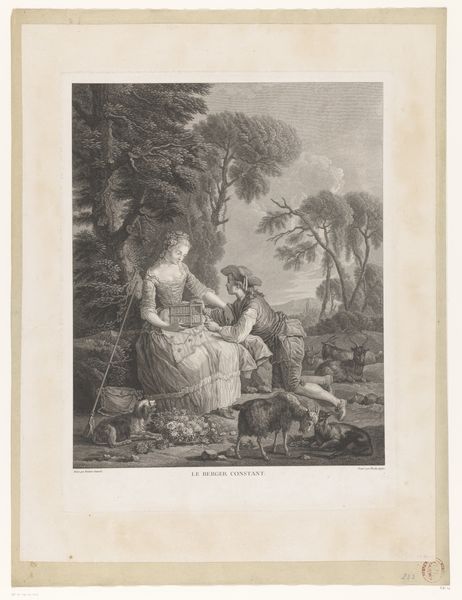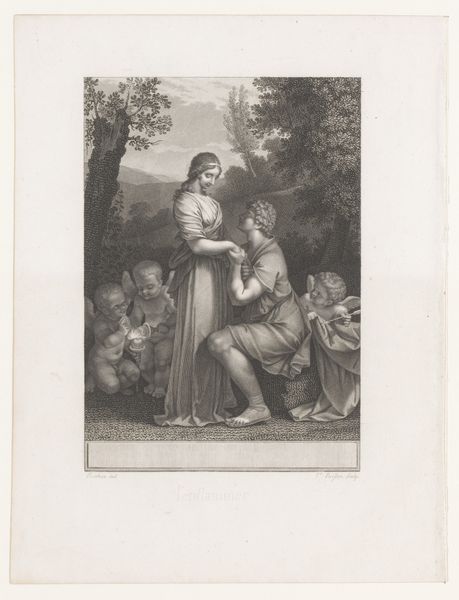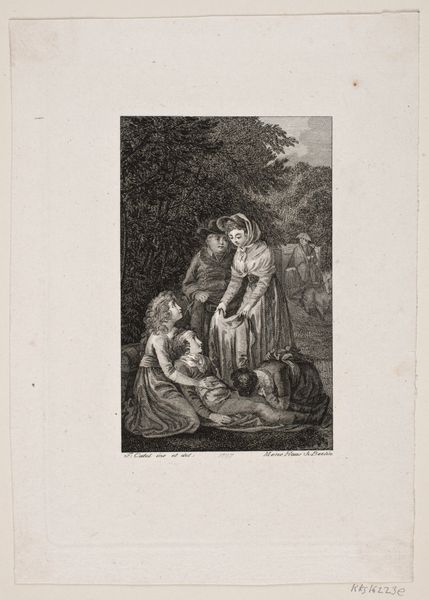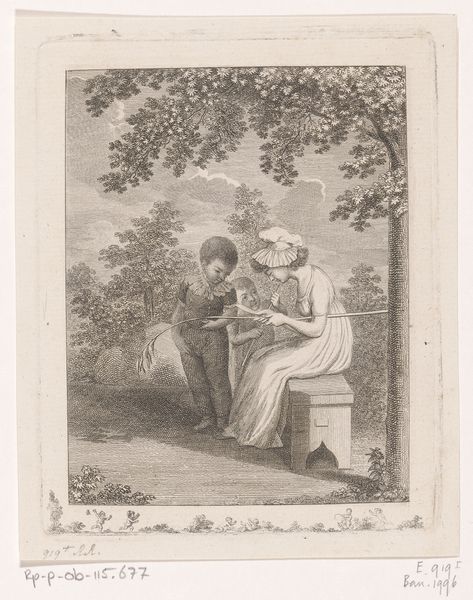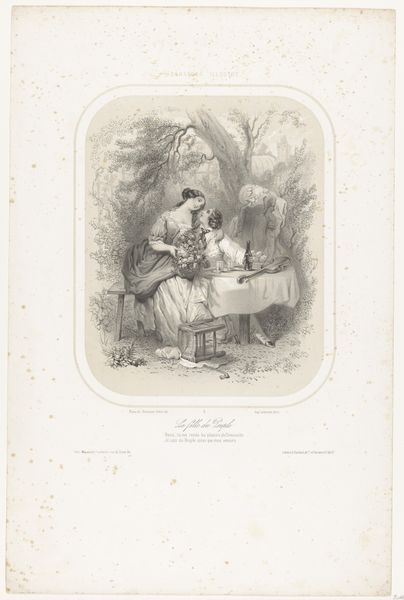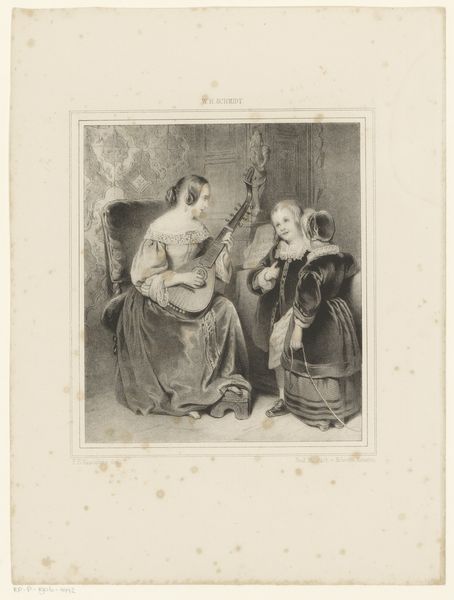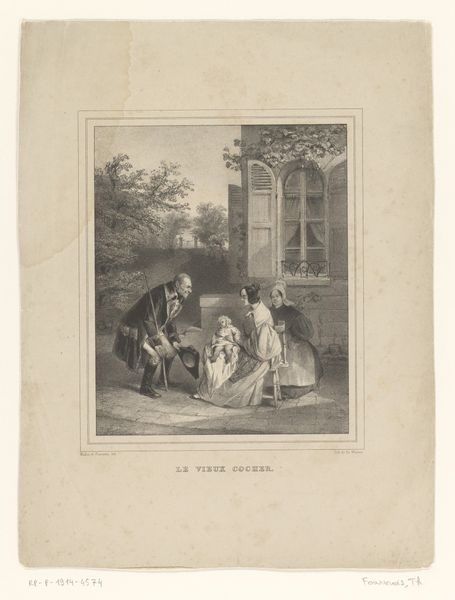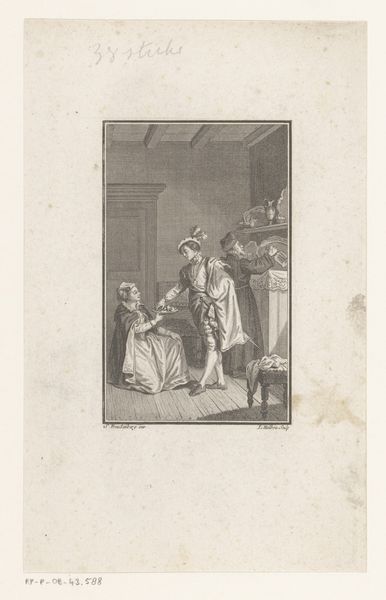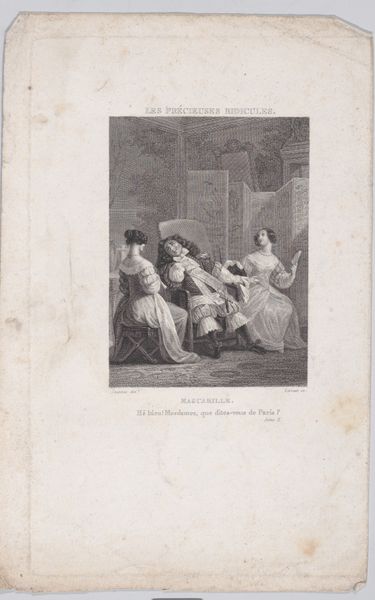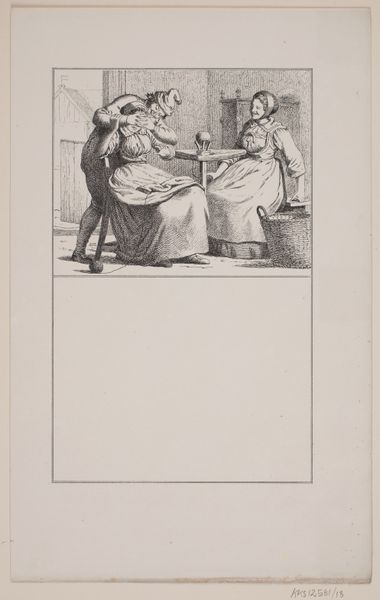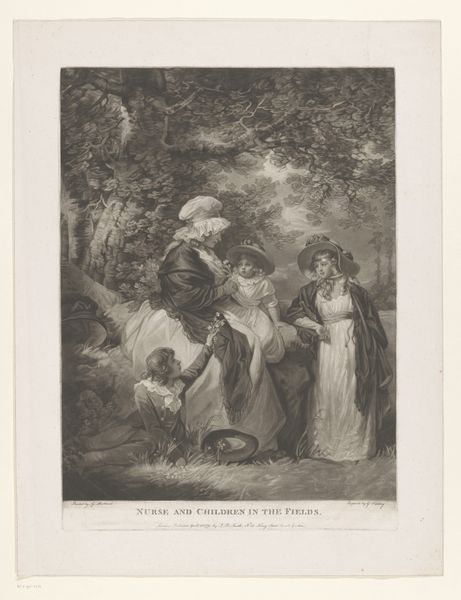
lithograph, print
#
portrait
#
lithograph
# print
#
landscape
#
romanticism
#
genre-painting
Dimensions: 624 mm (height) x 482 mm (width) (bladmaal)
Curator: Let’s turn our attention now to “Familieliv i Albano,” or “Family Life in Albano,” a lithograph created by David Monies in 1839. What's your immediate impression? Editor: It feels very staged. Serene, almost idealized, in its depiction of motherhood, but something about the arrangement feels constructed. The figures seem placed deliberately within the landscape. Curator: Precisely. Monies was operating within a Romantic tradition, imbuing the everyday with a sense of harmony and virtue. Observe the composition; how the artist employs a triangular structure to unify the figures. Note also the use of light and shadow to highlight the primary figures: mothers and their children. Editor: The soft gradients do give the piece a pleasant glow. It feels as though all activity has come to a halt to capture the domesticity of the subjects. This must represent, in its essence, 19th-century genre painting – an elevated record of daily life, one which serves a deeper societal purpose? Curator: It aims to evoke that sentiment, certainly. It's not simply documentation, it subtly communicates about ideal roles, especially in portraying womanhood within family and community – observe the act of spinning wool, representing domesticity and productivity. Note also how the placement of the other children highlights the caring aspect of motherhood within family unity, subtly creating narratives about ideal social behavior. Editor: And the romantic landscape contributes. With its lush foliage, distant hills, suggesting abundance and safety – providing an aspirational surrounding for the sitters in the family group. In what manner were lithographs such as this shared amongst the people? Were these purely aesthetic works? Or was there political purpose at hand? Curator: Lithographs, like this, democratized art. Prints allowed wider distribution. So “Familieliv i Albano” could influence ideals and behaviors across social circles and beyond geographic constraint, making Monies’ statement very powerful for its time, despite its delicate execution. Editor: Seeing beyond the immediate sentimentality in the image, the soft texture is actually giving me new insight to the artist’s perspective regarding societal dynamics of 1839. A domestic, harmonious, and highly curated snapshot in time! Curator: It has certainly given me reason to reconsider what role seemingly conventional, beautiful compositions have on viewers and communities across decades, centuries, continents and cultures.
Comments
No comments
Be the first to comment and join the conversation on the ultimate creative platform.
